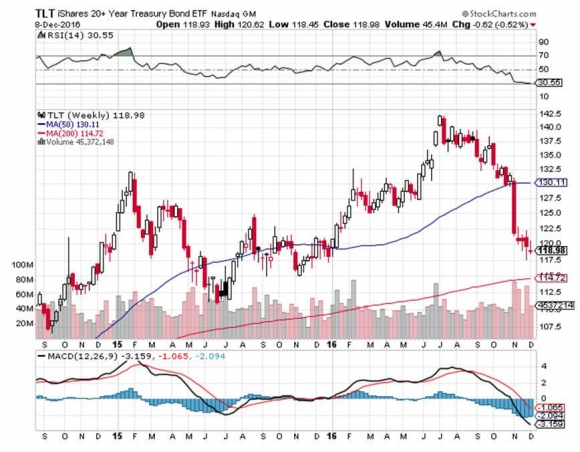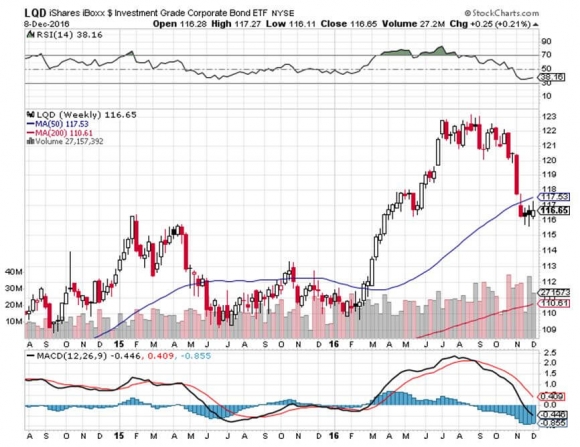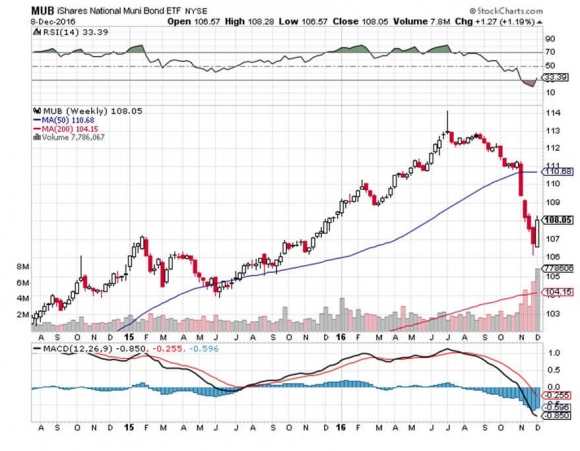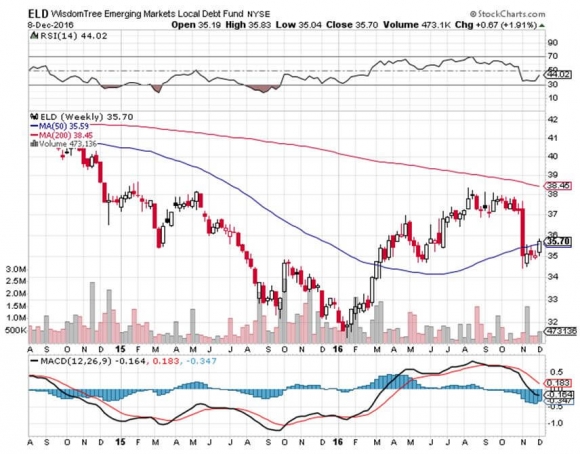The 1% Hit in the Bond Market
It has been a month now since the presidential election, and who has been hurt the most?
No, it is not liberals, unions, Planned Parenthood, or environmentalists.
It is the 1%.
That is because the 1% have the overwhelming share of their wealth parked in the bond market, and it has been heading in a decidedly southern direction for the past four weeks.
In fact, bond market losses now exceed $1 trillion since Trump gained the presidency. Fixed income has turned into a veritable dumpster fire.
The worst is yet to come. If Trump actually implements his vast expansion of the federal deficit, ten-year Treasury bond yields could rocket from 2.42% to 6%, knocking one third off of bond values.
There are many important lessons to be learned here.
For a start, this is not your father?s bond market.
The internal dynamics of the fixed income markets have changed so much in the last three decades that it has become unrecognizable to long term practitioners such as myself.
A big factor has been the takeover of the bond market by the richest segment of the US population and, indeed, the global economy. As wealth concentrates at the top, its character changes.
Let me stop here and tell you that the ultra rich are different from you and me, and not just because they have more money.
I have learned this after nearly half-century-long relationships with the planet?s wealthiest families, including the Rockefellers, Rothschilds, DuPonts, Morgans, and Pritzkers.? I first knew them as important contacts at The Economist magazine, then as clients at Morgan Stanley, then as investors in my hedge fund, and now as subscribers to The Diary of a Mad Hedge Fund Trader.
The wealthier families become, the more conservative they are in their investment choices. Their goal shifts from capital appreciation to asset protection.
They lose interest in return on capital and become obsessed with return of capital. This is how the rich stay rich, sometimes for centuries. I have even noticed this among my newly minted billionaire hedge fund buddies.
What this means for the bond market is that they never sell. When they buy a 30-year Treasury bond, it is with the expectation of holding it for the full 30-year term until maturity.
That way they can avoid capital gains tax and only have to pay interest on the coupon payments. When they die, spouses get the step up in cost basis, and then the wealth passes from one generation to the next.
Taxes are never paid.
Back in the 1980s, when wealth was more evenly distributed, the top 1% only accounted for 1% of Treasury bond ownership. Today, that figure is closer to 25%.
Add this to the 50% of our national debt that is owned by foreign investors who also tend to hold paper for its full term. Central banks don?t pay taxes either.
China and Japan are the biggest holders, with around $1 trillion each. This means that 75% or more of Treasury bonds are owned by investors who don?t sell.
With bonds very close to 30-year highs, keeping these securities has been the right thing to do. I can?t tell you how many investment advisors I know who have distilled their practices down to only fixed income instruments.
This involves the entire coupon clipping space, including municipals (MUB), corporates (LQD), junk (JNK), and even emerging market debt (ELD).
This is driven by customer demand, the 1%ers, not from any great insights or epiphanies they achieved on their own.
Of course, there is a certain amount of driving with your eyes firmly fixed on the rear view mirror going on here. Maybe the rich will finally sell their bonds once prices fall hard, stay down, and then go down some more.
That appears to be what is in front of us right now.
Inflation rearing its ugly head might also do the trick, which is always bad for bond prices, as it reduces the purchasing power of money.
Selling is certainly what they were doing with both hands in the early eighties, when the ten-year yield hit 12%.
Again, the rear view mirror effect kicked in big time, when bonds were called ?certificates of wealth confiscation?. They are about to become those once again.
There are other matters to consider with the 1% owning so much of the bond market. This is money that is not being invested in startups and creating jobs. It is money that is not being used to engender new economic growth.
One of the fantasies of the last election was the claim that the 1% were creating so many jobs. They weren?t, not as long as their money was parked in a risk-free bond market.
Instead, it is just stagnating. This is one reason why economic growth is so flaccid this decade and will remain so. This is fine for the 1%, but not so good for the rest of us.
The bottom line here is that while bonds are oversold and due for a bounce, it is a bounce that should be sold into.
Bonds are quickly becoming the asset class you don?t want to know, whether you?re in the 1% or not.







